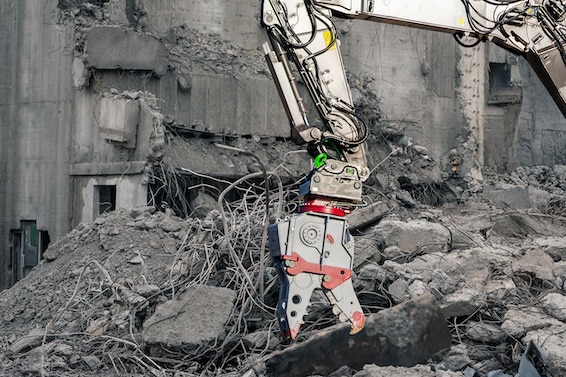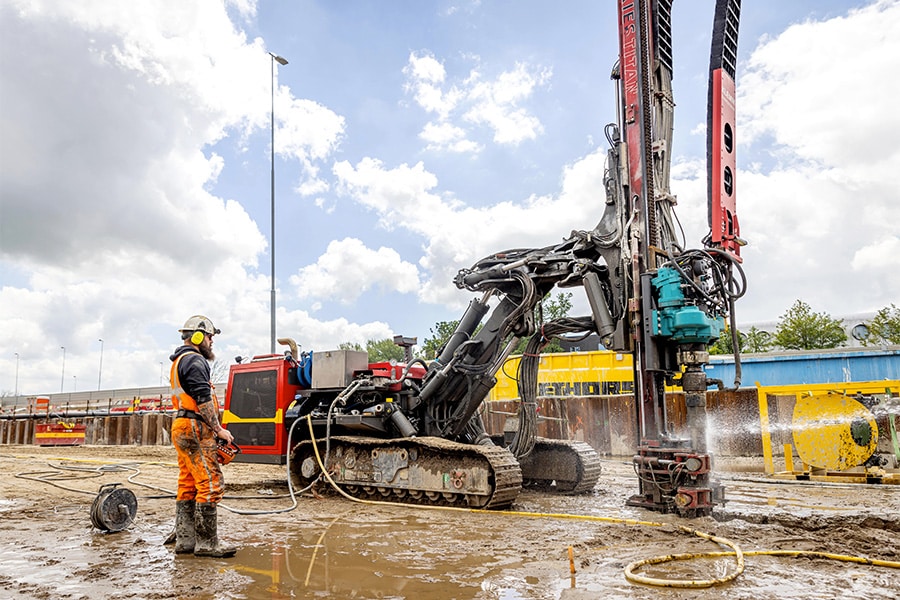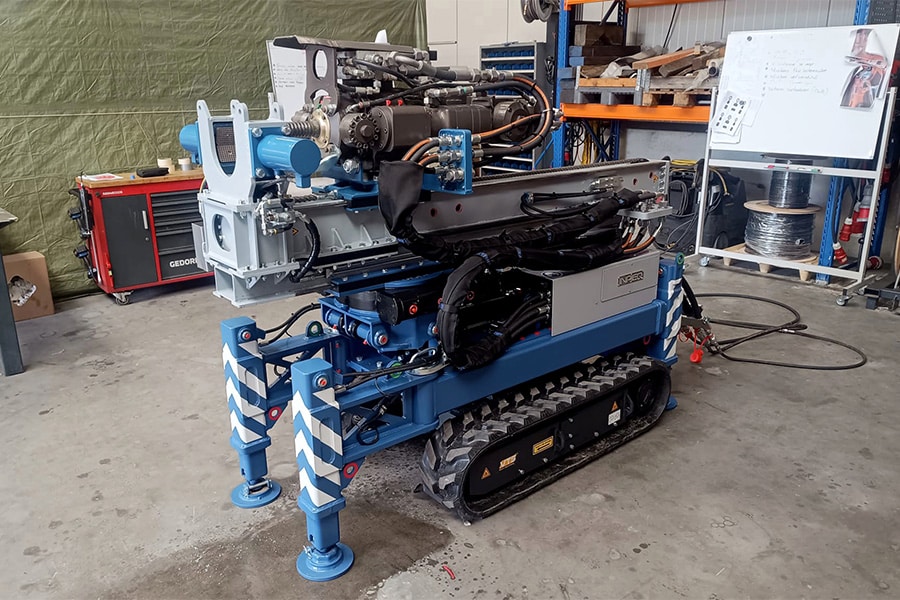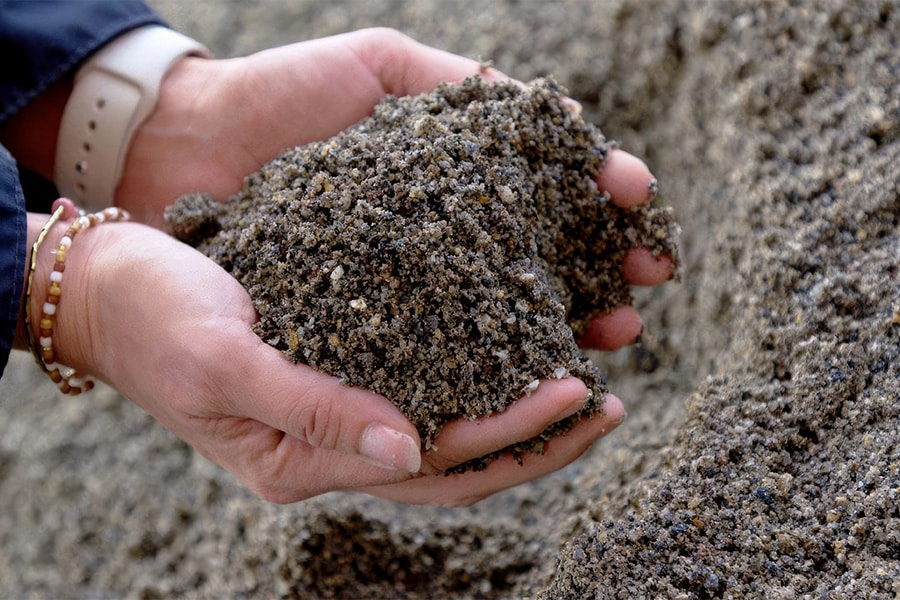
New A9 viaduct made with recycled sand from concrete of old viaducts
Demolished viaducts over the A9 near Amsterdam live on in a new viaduct above the same A9. This is possible thanks to sand and concrete granulate extracted from the old concrete by recycling company Renewi.
Somi Lotfi is closely involved in the project as business development manager minerals. "We got involved through the demolition contractor. They wanted us to recycle 40,000 tons of concrete rubble from viaducts. When I heard that Rijkswaterstaat was the client, I made the proposal to use it in the same project."
Enthusiast
"After our presentation and tour, everyone was excited about the quality of the recycled washed sand," says Lotfi. That was the basis for concluding an agreement between the various parties. "That cooperation in the chain is important. We need clean concrete rubble to be able to recycle and use it back in new concrete."
"Unfortunately, the regulations at the moment are not such that you can apply a large percentage of recycled raw materials. Technically it's not a problem, but the regulations don't allow it. It would be good if the regulations were adapted to the possibilities we have to apply more recovered raw materials than we do now."
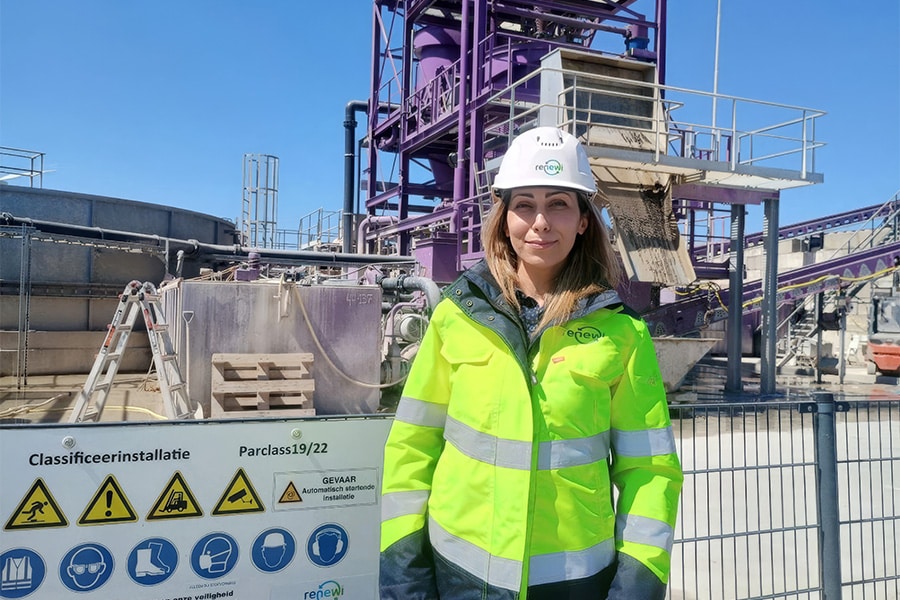
Five levels
She grabs a paper and pen to outline what levels of recycling there are and where the company stands now with concrete reuse. "You have five levels, with level one being the lowest. That's using crushed rubble as a road foundation. That's downcycling." That is the lowest level of recycling.
Level two is already more interesting, because the crushed concrete rubble then yields usable concrete aggregate. That is fine to use as a substitute for gravel in new concrete. "When you talk about recycling, this happens in the vast majority of cases, somewhere around 95 percent," she says.
Sand is also released during the crushing process, but it cannot be used in that form in new concrete. Then two jars of sand samples appear on the table. "You can see that this unwashed sand sticks easily. That already causes problems in the bunkers, because they get clogged that way. Also, with the unwashed sand, you have too little control of what eventually happens in the concrete mix."
Clean sand
There is a solution: washing the sand. This is done in a Renewi plant in the Amsterdam port area. And so the company turns it into clean sand, which also absorbs less moisture. That is fine to use when making new concrete. Because the very fine particles are out, you don't have to deal with blockages in the bunkers. Washing also removes contaminants such as wood and plastic. With the washed recycled sand, we have now reached level three.
Another level up is the recovery of cement stone from demolition concrete, in addition to concrete aggregate and washed sand. "Mind you, we're talking about cement stone and not cement," Lotfi says. "You can't recover that from concrete because when it was made, it went through a chemical reaction and changed properties. Cement stone is not reactive, it is inert. At this step, you basically have recycling from concrete rubble to the three components; aggregates, sand and filler."
In the fifth and highest level of concrete recycling, the cement brick is processed so that it does become reactive. This allows more cement to be replaced, which ultimately reduces CO2 emissions.
Taking steps
It seems logical that the goal is to reach the two highest levels, and Lotfi understands that. "But to eventually get there you will have to take steps at lower levels. The vast majority of concrete recycling now takes place at level two. Now let's first try to make the step to level three, that is, with washed recycled sand."
